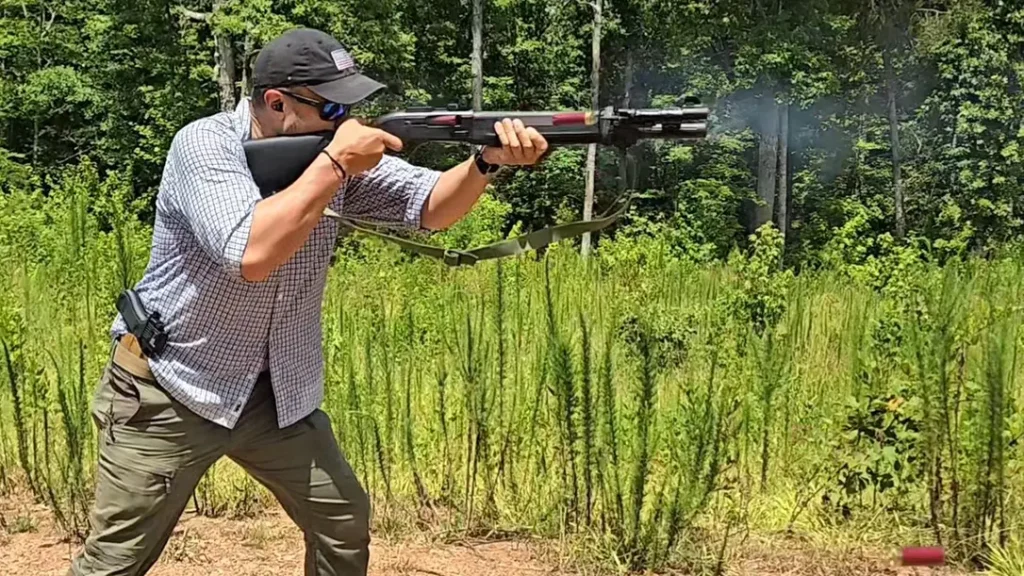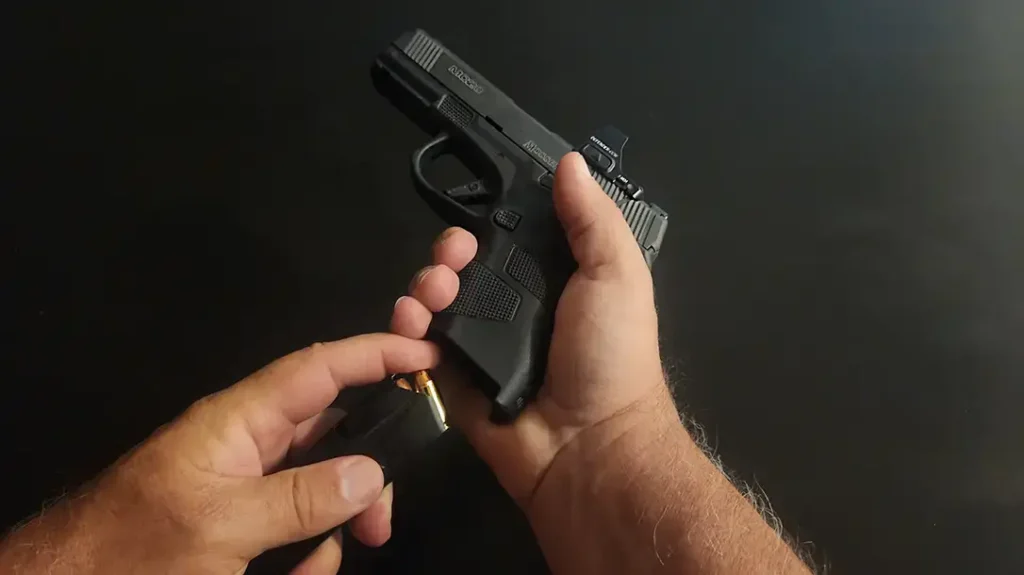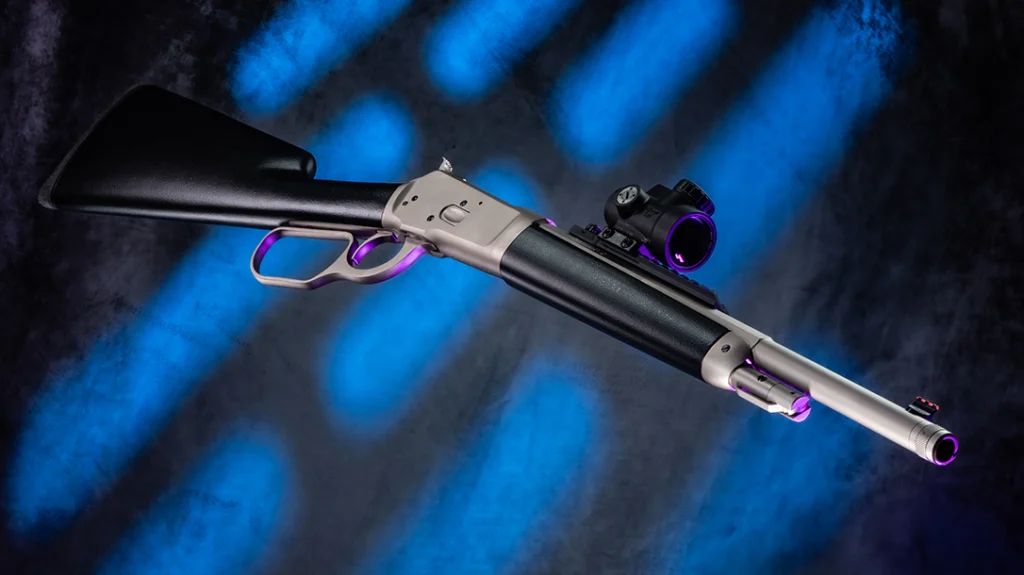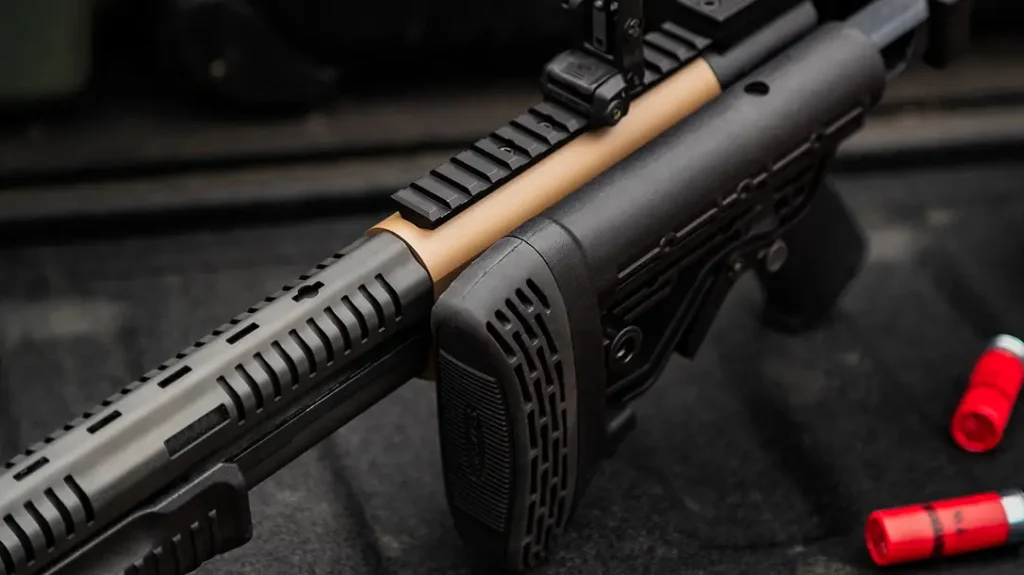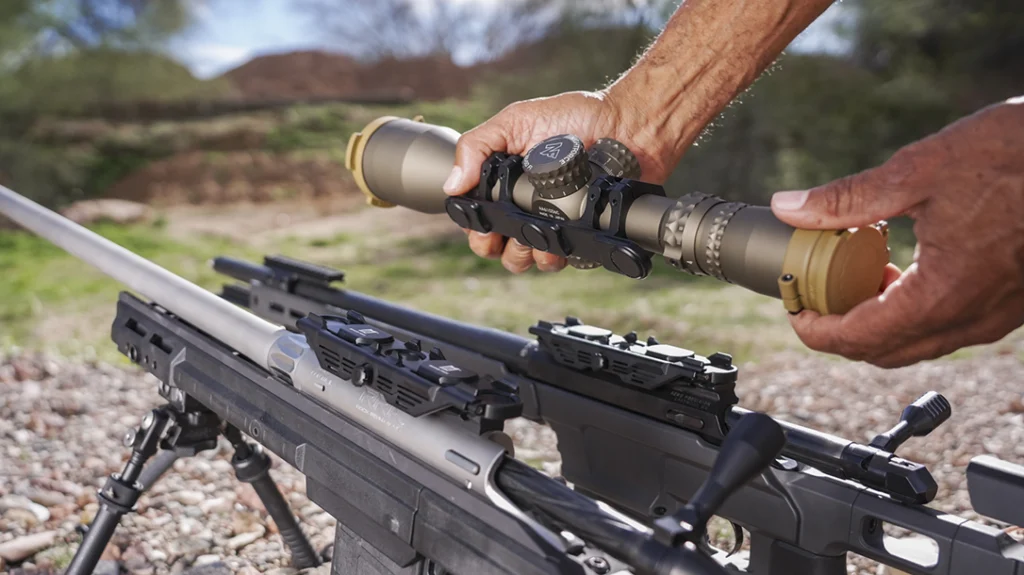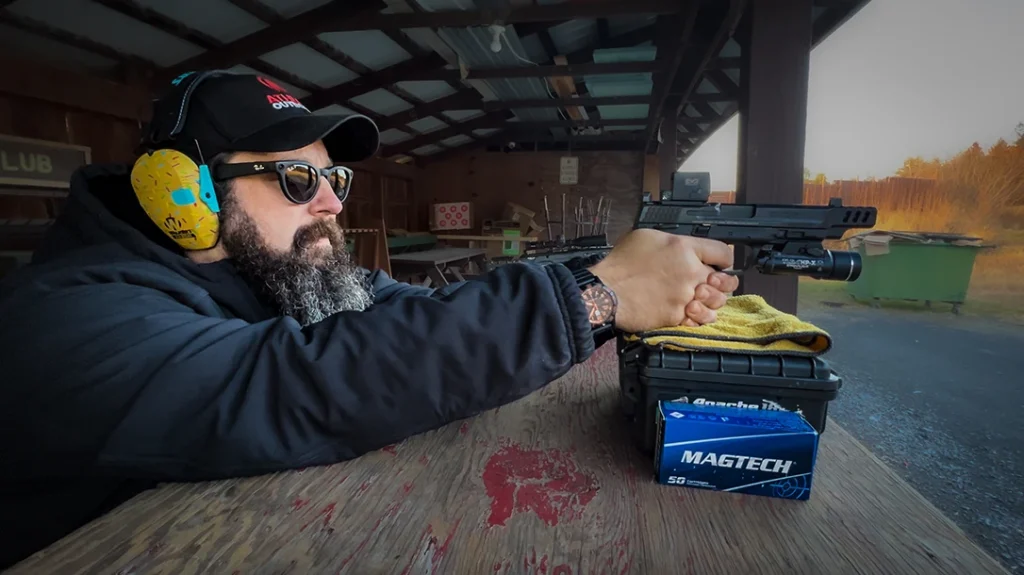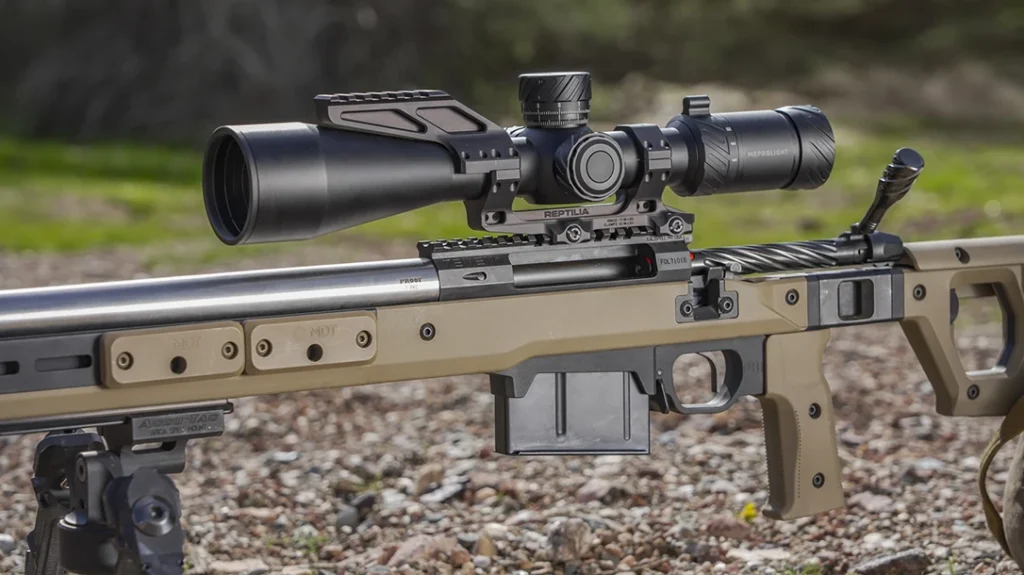“Ready, UP!” This command prompts a shooter during a common drill in defensive shotgun courses. The idea behind the drill is to quickly and accurately acquire and engage a target, usually with a time standard or against the pressure of the class with each person on the line not wanting to be last to fire. Some of the fastest times are the product of having a good ready position just at the base of the target stand and plenty of good reps working slowly to avoid building training scars. At some point, you have to speed up and move away from the “slow is smooth and smooth is fast” mentality. Slow is slow. To be faster, you have to be more efficient and train snap shooting a shotgun from the ground up.
Snap Shooting a Shotgun
Adjust Stance
Think of your stance like you face the task of pushing a car out of a roadway. That stance would not be with your feet together nor would it be with your feet parallel to your shoulder blades. A good stance for shooting a shotgun is the same as a good fighting stance. Point your toes toward the target, feet staggered, with the rear foot on the dominant side of the body dropped back, with the heel of the support side just forward of the toes on the dominant side. Knees stay slightly bent, with the head over the hips and the hips over the heels. With this stance, the shooter can move in any direction, and most importantly, handle the recoil of a 12 gauge.
Firearm Fit
A shotgun should work with the shooter and not fight the shooter. One of the most common problems encountered in shotgun courses is having a buttstock that is too long for the shooter’s frame. For defensive shotgun purposes, a shorter stock, including a youth stock, works better for mounting the shotgun closer to the center of the chest instead of the shoulder pocket. Also, consider the gauge of the shot, considered part of the fit. While a larger shooter can likely use any gauge available, a smaller statured shooter will want to avoid those gauges with the most recoil. If recoil causes anticipation or a negative response, the shooter will focus on that instead of the impulse that prompts the shot.
Advertisement — Continue Reading Below
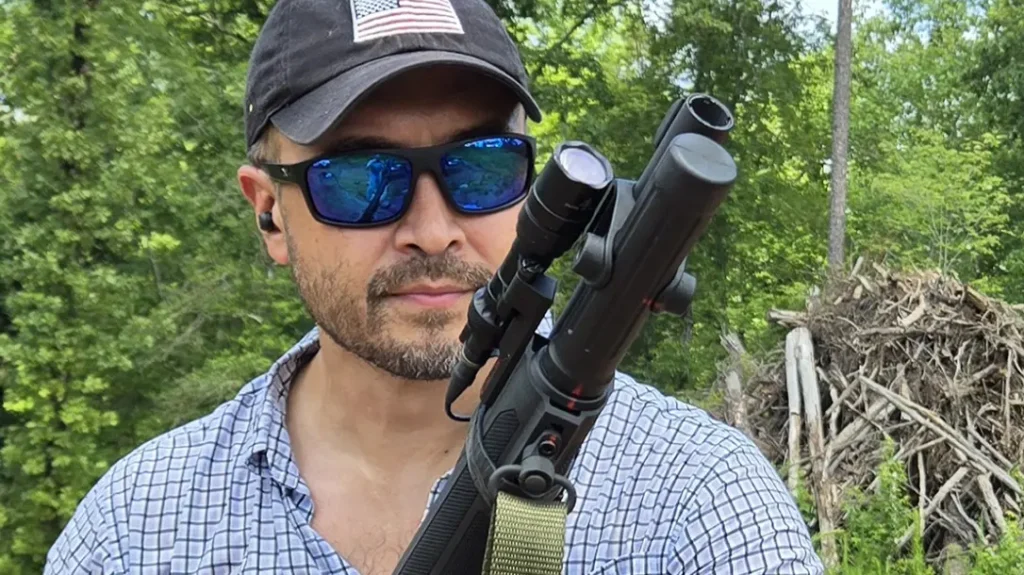
Touch Point
The touch point is the spot just off of the center of your chest where the toe of the shotgun stock touches when the shotgun is properly mounted. This touch point is where the shotgun will rest in a low ready position and where it will first make contact before proper mounting from a high-ready or strike-ready position. Touch points are a concept that exist across all firearm platforms, and they serve as a known reference point.
With a proper touch point high enough on the chest, the shooter will not have to duck their head to get good sight alignment. A good drill is finding that touch point and mounting the shotgun loaded with snap (no pun intended) caps. Stand close enough to a wall to see a single dot or a light switch panel screw but far enough away to allow the shotgun to be presented without hitting the wall. Repeat good reps slowly and then speed up as the reps increase.
Advertisement — Continue Reading Below
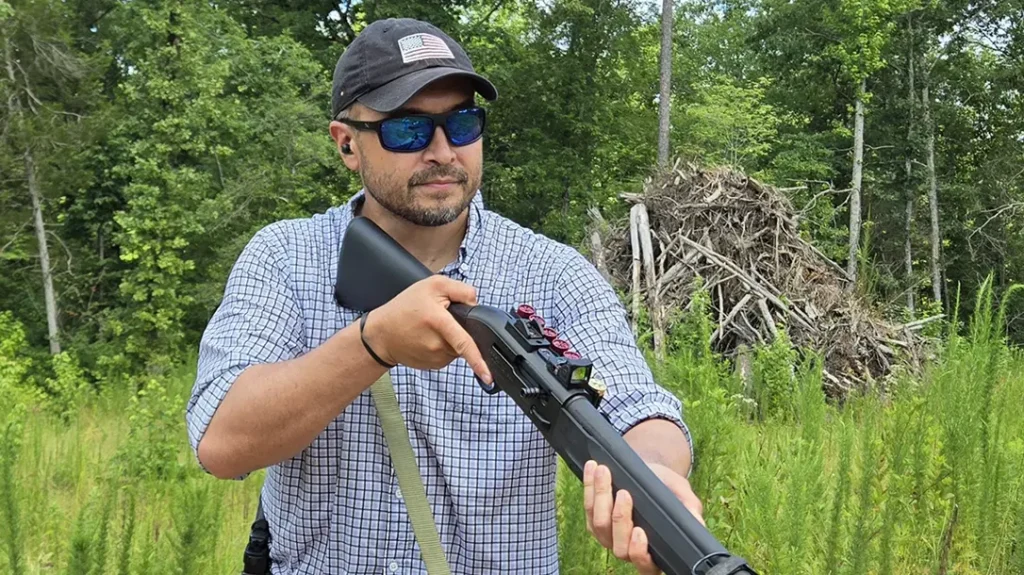
Recoil Mitigation
Snap shooting typically comprises a single shot. But misses or lack of desired effect can fail to eliminate the animal or threat. A recurring problem with drilling a single shot in snap-shot training comes with keeping your mind in training mode instead of fight mode. When training, remember the purpose of your training. Threats appear at any point; requiring more than one round to finish the fight. Recoil mitigation training and preparing for a second shot is essential. Firing two or more shots will test your structure, and using a shot timer will test your efficiency.
One of the proven methods of taming the recoil of a shotgun is the push-pull technique. In this method, the forend of the shotgun is pushed forward, and rearward pulling is done on the pistol grip. Another way to visualize this technique is to imagine exerting force on the shotgun in an attempt to pull it apart where the barrel meets the receiver. With recoil mitigation, you should be able to send your full magazine tube’s worth of shells on your target with a proper sight picture between each shot. Remember, there is no such thing as a double tap; only controlled pairs if you are a professional.
Advertisement — Continue Reading Below
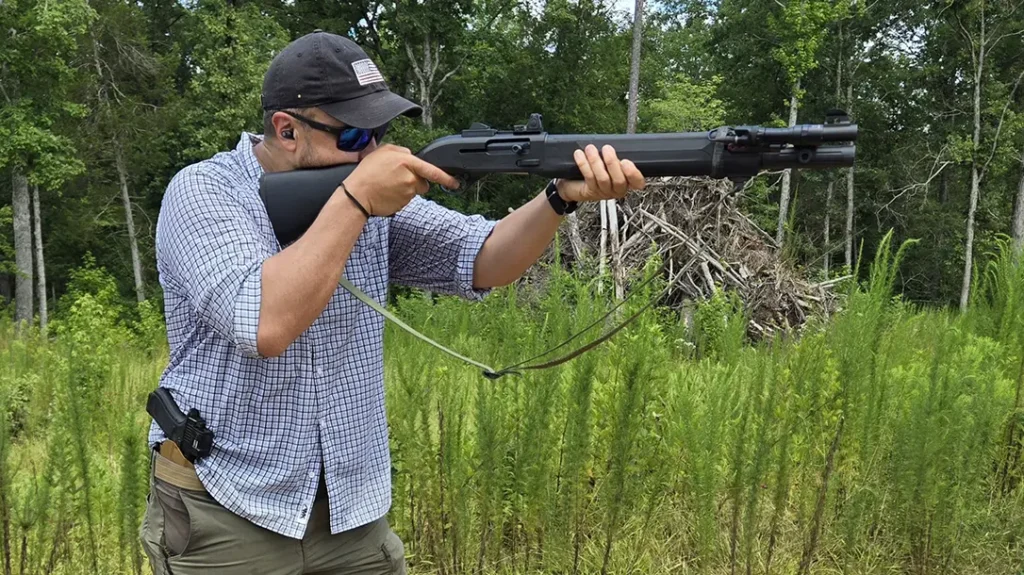
Go on the “B” not the “P”
Action will always beat reaction. Going on the “B” instead of the “P” is not limited to attempting to get the best time against a shot timer “Beep.” The “B” may be a threat starting to raise a firearm while the “P” may be when that threat has already fired a shot at you. Going on the “B” and not the “P” does not mean going prematurely. It does mean maintaining situational awareness and not losing track of any motion or sound that should indicate action.
In training, going on the “B” instead of the “P” sometimes results in students not only moving the firearm too soon but also losing trigger-finger discipline. Going too soon means sending rounds low on your target. In training this isn’t an issue as the backstop is usually a safe direction berm. In reality, shooting eight or nine pellets too soon could mean a combination of property damage and personal injury to someone who isn’t a threat to you.
As you train your snap shot, push yourself in training to move faster. Learn when you will sacrifice accuracy for speed and then dial it back. You need to be fast, wise, and accurate, because being only two of those three won’t do.
Advertisement — Continue Reading Below
Find a place to shoot at nssf.org.
